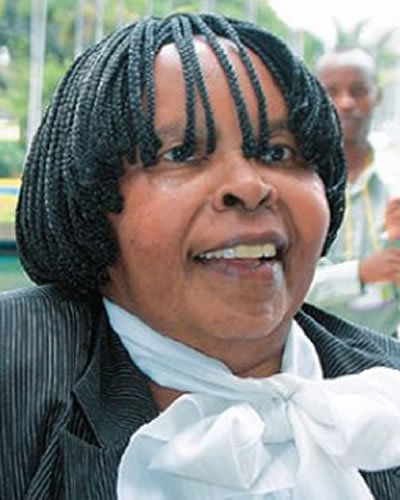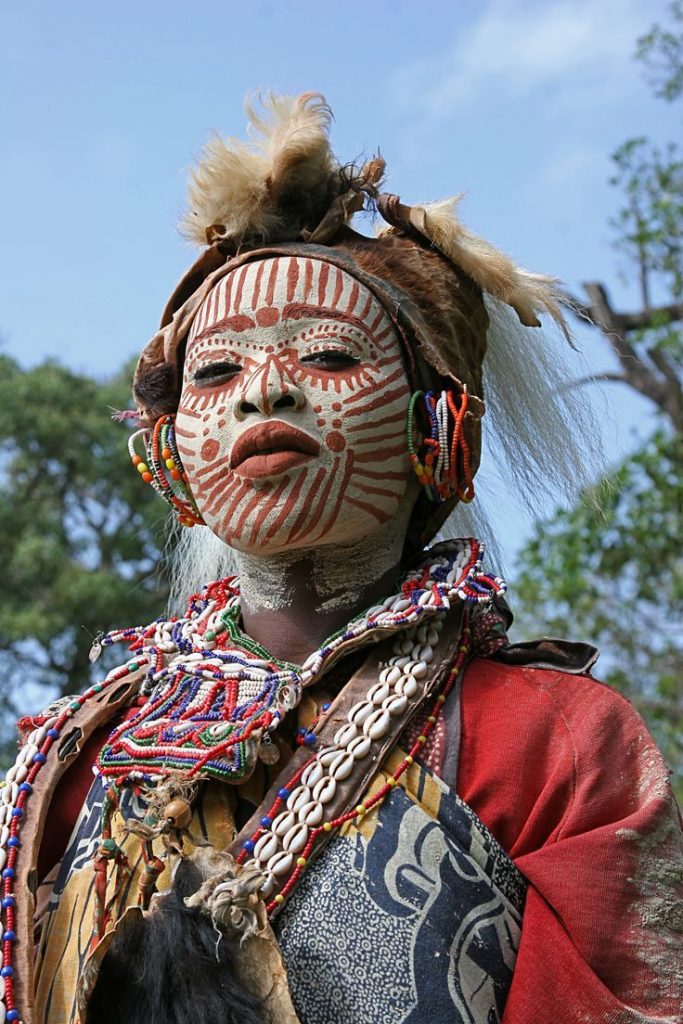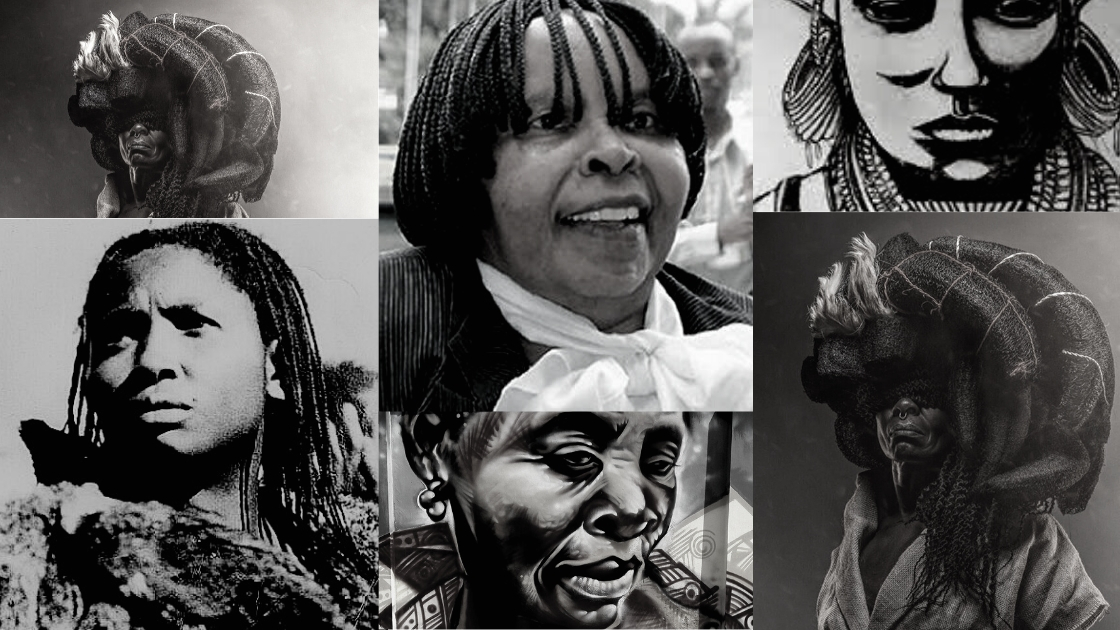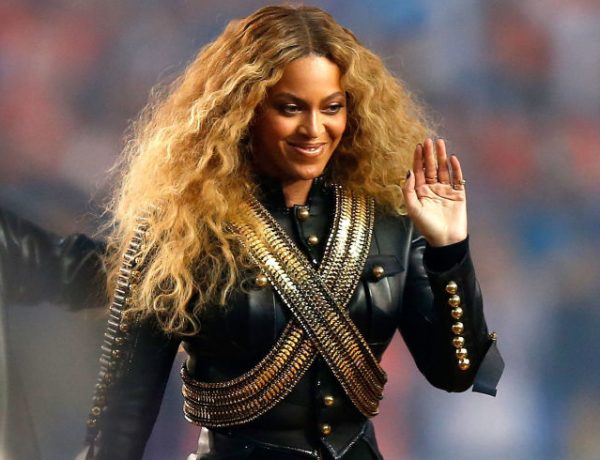How does one deploy dance as a weapon for freedom fighting? Or the woman hair as a fortress in battle.
Another used the power of food.
Call them Kenya’s founding mothers if you will. These women bore the weight of a cause for freedom in their veins. They epitomized the unconventional in their methods to fight their oppressors; an act that undeniably transformed them into true illustrations on the canvass of leadership.
These six women amongst others, played significant roles in Kenya’s fight for freedom and the empowerment of their communities. They dug through unconventional methods to play monumental and history-bound roles in wrestling their homeland from the jaws of colonialism.
Theirs is a story that symbolizes the bandwidth of inspiration richly domiciled within the gene of every African woman.
Mekatilili wa Menza

Mnyazi wa Menza (Mekatilili Wa Menza) (or Makatilili) was a Kenyan woman leader, who led the Giriama people in a rebellion against the British Colonial Administration and policies actively in 1913 – 1914. She became Mekatilili after the birth of her first son Katilili. She was widowed, and this gave her more freedom to move around as a woman leader, telling her people to resist the British.
When the British colonial administration tried to impose their policies and ordinances on the Giriama people, Mekatilili boldly stood up against them. She believed in her people’s traditions and didn’t want to see them tainted or abolished by the British. She moved from town to town, performing the Kifudu Dance — One of the distinguishing features of their cultural and spiritual life — and a main reason why they were able to retain their traditional practices in the face of British colonialism.
Kifudu as a funeral dance form is led by female dancers accompanied by male percussionists. The first portion of the dance is more performative, with a select group of dancers following specific choreography. The second part of the dance opens up to community involvement; everyone present, led by the female dancers, will dance together. The participatory nature of Kifudu is important in cultivating a sense of community cohesion in times of loss.
At a meeting in Kaya Fungo, Makatilili together with Wanje wa Mwadori Kola, a medicine man, administered an oath among the people calling for non-cooperation with the British. The British responded by seizing Giriama land and setting their homes ablaze. What followed was the Giriama uprising which led to Mekatilili’s arrest. She was jailed in Mumias for five years after which it is said she returned to her home where she died in 1924.
Field Marshal Muthoni Kirima

Muthoni wa Kirima is a retired top-ranking female fighter in the Kenyan Land and Freedom Army of the Mau Mau Uprising in the 1950s. Few Mau Mau women became active fighters, and Muthoni is the only woman to have attained the Mau Mau rank of field-marshal.
In her 20s, Muthoni worked as a spy for Mau Mau fighters who had camped in the forest when war broke out in 1952.
During the war, Muthoni also helped supply the fighters with food. She was wounded on two occasions, and also had two miscarriages which left her unable to bear children. On one occasion where she was wounded, she and seven other fighters were attacked. She was able to crawl to safety with a gunshot wound in her shoulder, but all the others were killed.
Muthoni was never caught in the forest. She moved out of the forest after Kenya gained independence from Britain in 1963. Her husband, General Mutungi, died two years later.
Kipipiri Women

The Kipipiri women were four warriors, wives of the four generals of the Mau Mau who found innovative ways to incorporate their culture and hairstyles in the efforts to defeat British imperialist rule of Kenya. Every full moon, the women would dress themselves in elaborate hairstyles that would be useful in their revolutionary efforts.
Their leader, Bobo, had hair twisted in elaborate knots and curls that mirrored the map the women would use to navigate the caves in which their husbands would hide at night to plan.
The second in command, Chep, was skilled in weaponry and combat and had the extraordinary ability to see in the dark. Her hair was woven into large curls so that she could hide knives and other weapons in it. The third warrior, Achi, was the most skilled chef in the village. Her job was to prepare and carry large amounts of food to and from the village in her basket-weaved hair. She is depicted as having a strong neck, so as to always keep her head level and the food stored in her hair upright. The last warrior, Mwende, was the entertainer of the village. She never ventured into the forest but instead prepared the women at home to welcome the men back from war when they returned. Her hair resembled large sound amplifiers, and she wore a mouth-piece connected to pipes that allowed her vocals to travel to the amplifiers in her head.
Wambui Otieno

Virginia Wambui Waiyaki who became Wambui Waiyaki Otieno Mbugua after her second marriage, and generally known as Wambui, was born into a prominent Kikuyu family and became a Kenyan activist, politician and writer.
Wambui became prominent in 1987 because of a controversial legal fight between her and the clan of her Luo husband Silvano Melea Otieno over the right to bury Otieno. Wambui was the great granddaughter of Waiyaki wa Hinga, a Kikuyu leader who was arrested in 1892 by officials of the Imperial British East Africa Company and who died in suspicious circumstances soon after the arrest.
In 1952, when at secondary school, Wambui swore an oath of allegiance to Mau Mau, and in 1954 she left home to join the Mau Mau insurgency in Nairobi after the brief detention of her father. Wambui spied on the British and mobilized women and domestic staff to obtain arms. She was also involved in the campaign to eradicate the “colour bar” in Nairobi, which designated separate areas in public spaces for Europeans, Asians and Africans. She was briefly arrested several times for these activities and issued with orders excluding her from Nairobi, which she flouted. Upon her arrest where she was taken to Lamu for imprisonment, there she was abused by her jailer severally.
Mary Muthoni Nyanjiru

Mary Muthoni Nyanjiru was a Kikuyu woman and a Kenyan political activist remembered for leading the protest after the arrest of Harry Thuku, that resulted in her death.
When Harry Thuku was jailed in 1922, hundreds of people stood outside Central Police Station, Nairobi calling for his release. Among them was Mary Muthoni Nyanjiru. On seeing that some of the men weren’t putting in as much effort into seeking Thuku’s release as they should, Mary stripped, calling the men cowards.
The crowd responded to Mary’s calls and went towards the police station only for the police to open fire. That day, many were killed as white settlers at the nearby Norfolk Hotel also opened fire. Among the deceased was Mary Muthoni Wanjiru.
Wanjiru Nyamarutu

Wanjiru belonged to a militant category of freedom fighters who discarded ‘western clothes’ and wore stitched pieces of cloth wrapped in the traditional Kikuyu style. As a symbolic way of demonstrating allegiance to Mau Mau, young and newly married initiates might have their upper ear lobes pierced, Gukaywo Nyori, and their heads shaved clean as a sign of being pure Kikuyu.
For a long period, Wanjiru was responsible for the collection and despatch of food to guerrillas in the Ndothua, Nessuit, Gichobo and Menegai hills forests in Njoro and Nakuru areas, and for her services she was accorded the rank of Genero-wa-Rigu – General-in-Charge-of-Food. With the help of female and male supporters, she raised money and collected clothes, medicine, scrap metal for making rifles and ammunition were solicited from sympathetic auxiliary staff at Nakuru District Hospital.
Because of her extensive involvement in militant politics, Wanjiru was forced to flee from Njoro to Nakuru. Here she continued to oversee the administration of the oath, however, and remained very active helping to recruit and despatch new guerrillas to the various regiments where additional manpower was needed. As the moving spirit behind the team undertaking this task, Wanjiru became known as Nina-wa-Anake – the Mother of Senior Warriors.
Although by 1956 the freedom fighters had been militarily defeated, they were undaunted in their quest for independence. At the end of the Emergency (1960) Wanjiru returned to Nakuru and took a new oath, the Kenya Land Freedom Army (KLFA) oath.
Ariana Grande in one of her songs beautifully connoted that perhaps, “God is a Woman”….well to us, maybe an African woman.
Inspired???




1 Comment
Sayo
April 20, 2020 at 2:16 AMThis is awesome. This is literally Funmilayo Ransome-Kuti in 6 places